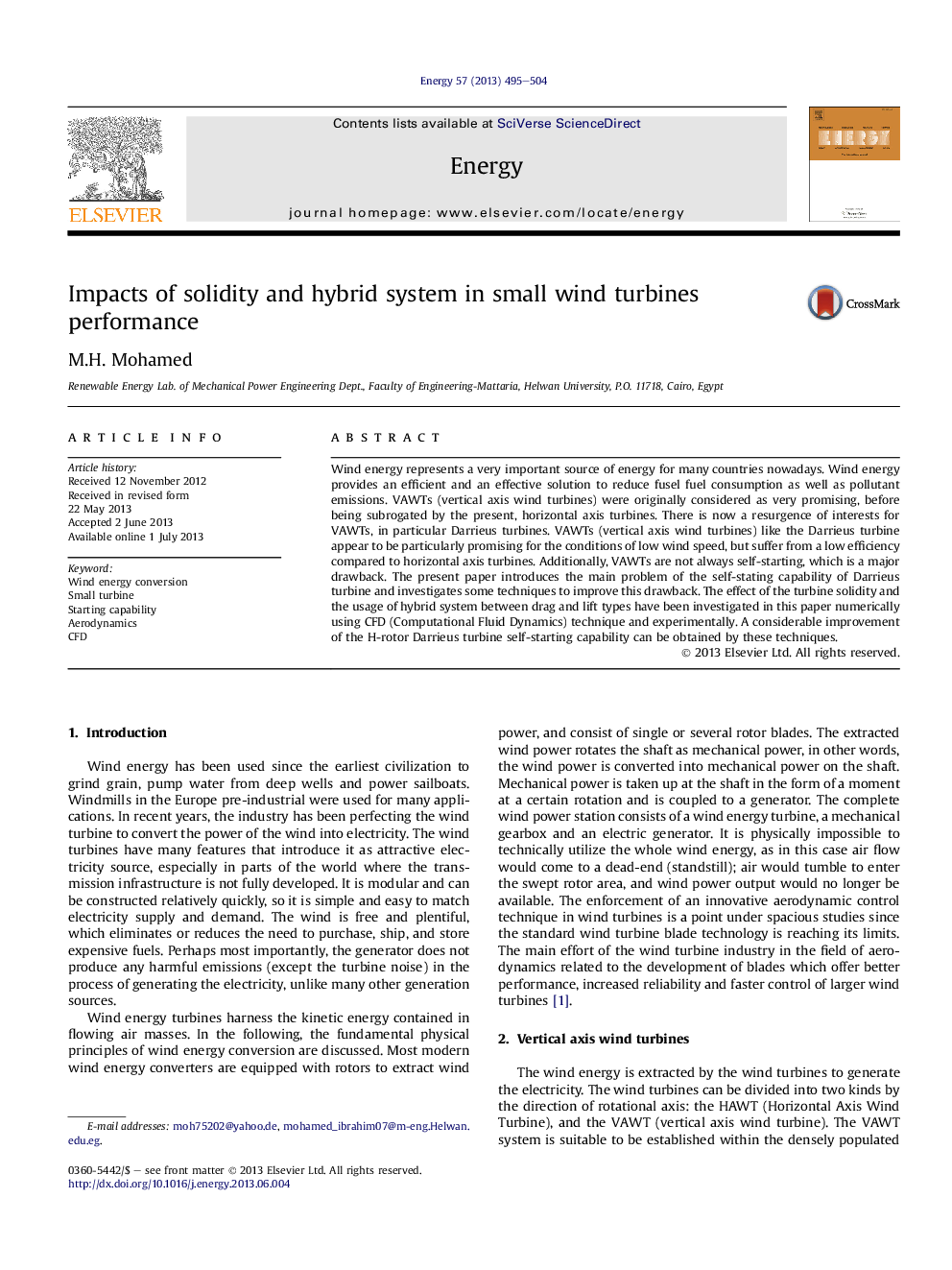| Article ID | Journal | Published Year | Pages | File Type |
|---|---|---|---|---|
| 1733092 | Energy | 2013 | 10 Pages |
•Small wind turbines are a promising idea for urban wind energy conversion.•The present study objective is to improve the performance of VAWTs.•Hybrid system & high solidity rotors have been investigated to improve self-starting capability.•Hybrid system is not recommended definitely for urban wind energy conversion.•Increasing the solidity of the VAWTs improves the self-starting capability.
Wind energy represents a very important source of energy for many countries nowadays. Wind energy provides an efficient and an effective solution to reduce fusel fuel consumption as well as pollutant emissions. VAWTs (vertical axis wind turbines) were originally considered as very promising, before being subrogated by the present, horizontal axis turbines. There is now a resurgence of interests for VAWTs, in particular Darrieus turbines. VAWTs (vertical axis wind turbines) like the Darrieus turbine appear to be particularly promising for the conditions of low wind speed, but suffer from a low efficiency compared to horizontal axis turbines. Additionally, VAWTs are not always self-starting, which is a major drawback. The present paper introduces the main problem of the self-stating capability of Darrieus turbine and investigates some techniques to improve this drawback. The effect of the turbine solidity and the usage of hybrid system between drag and lift types have been investigated in this paper numerically using CFD (Computational Fluid Dynamics) technique and experimentally. A considerable improvement of the H-rotor Darrieus turbine self-starting capability can be obtained by these techniques.
